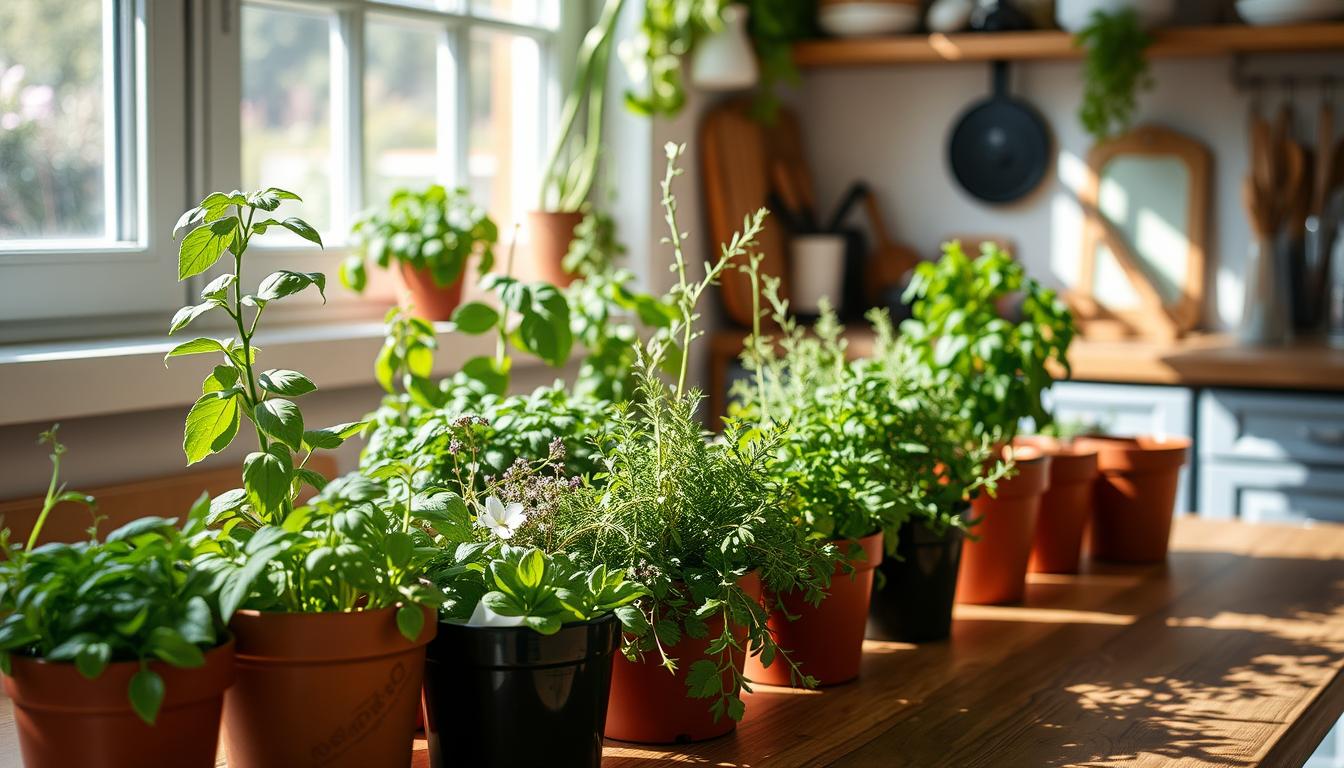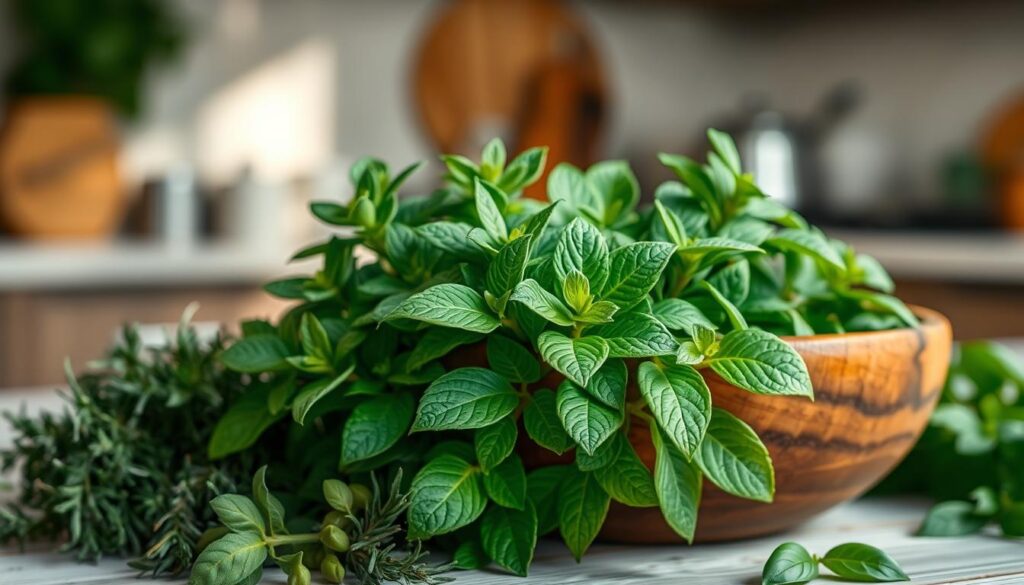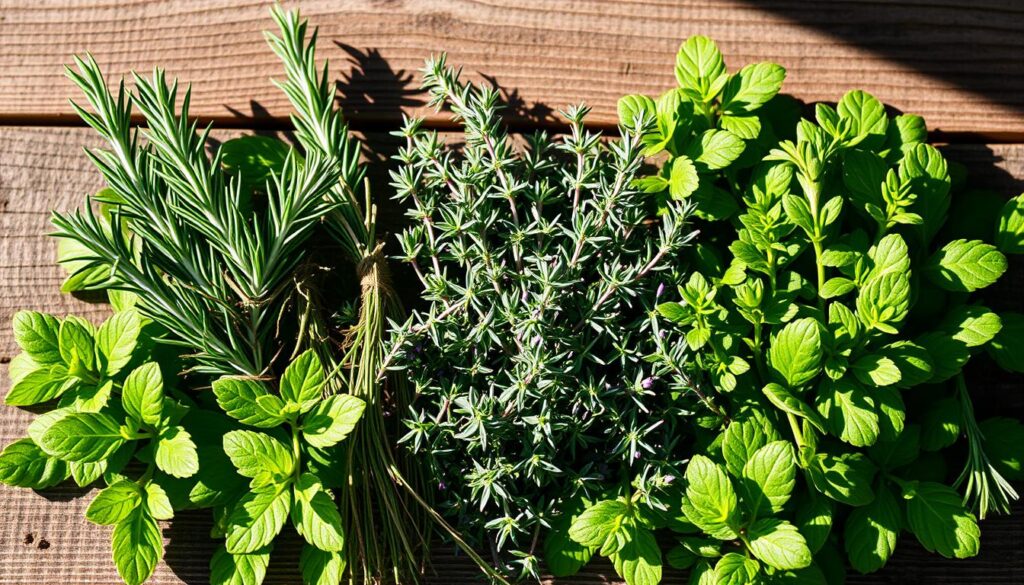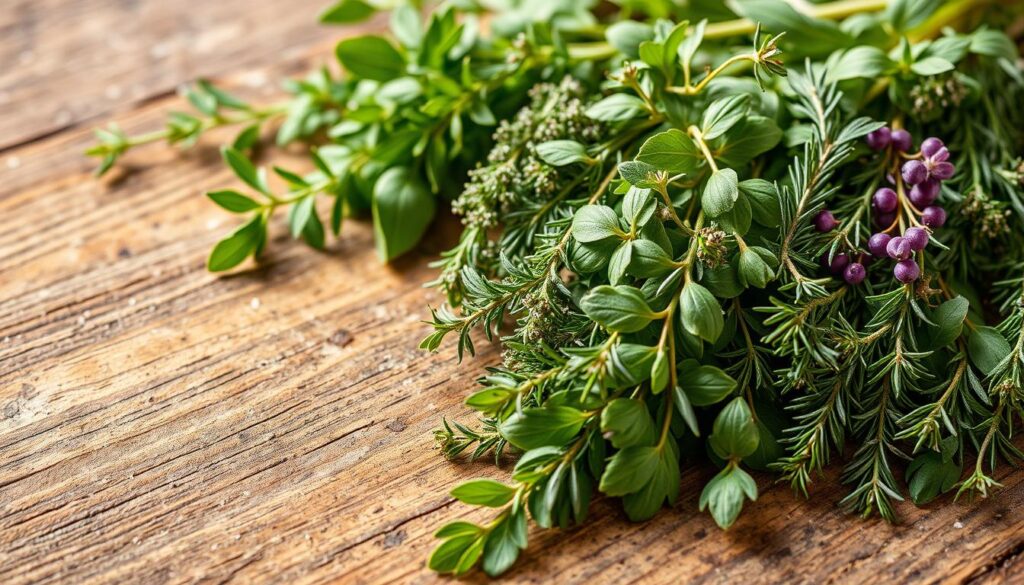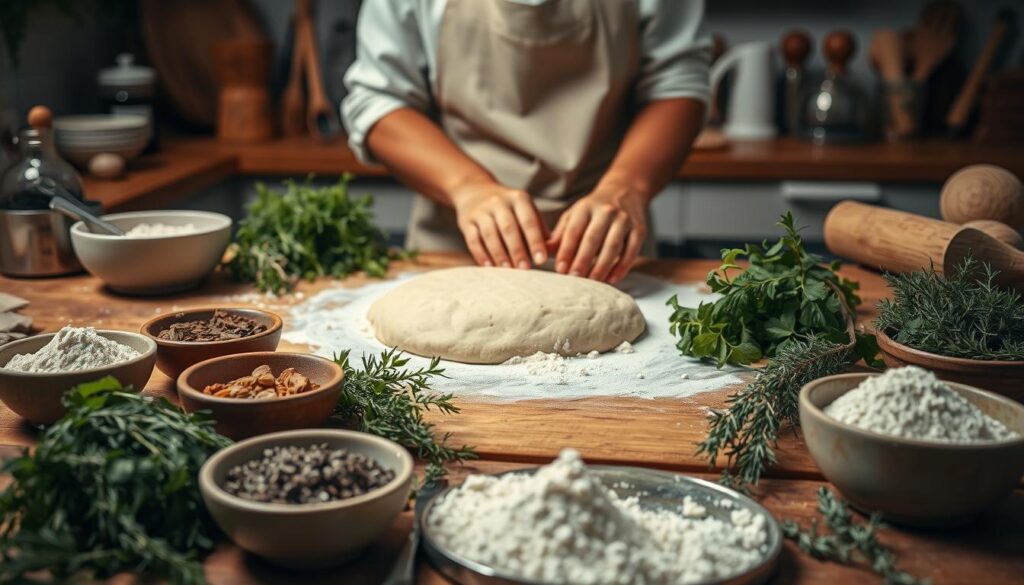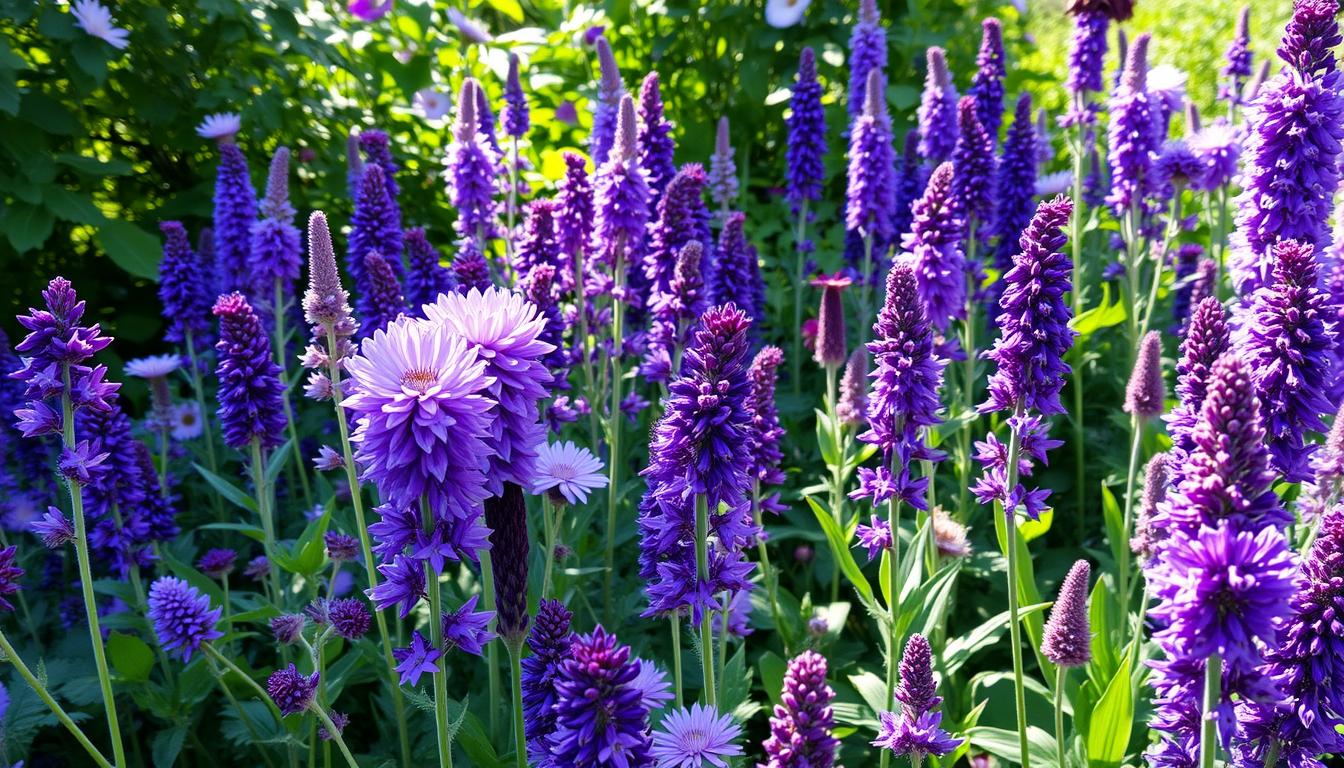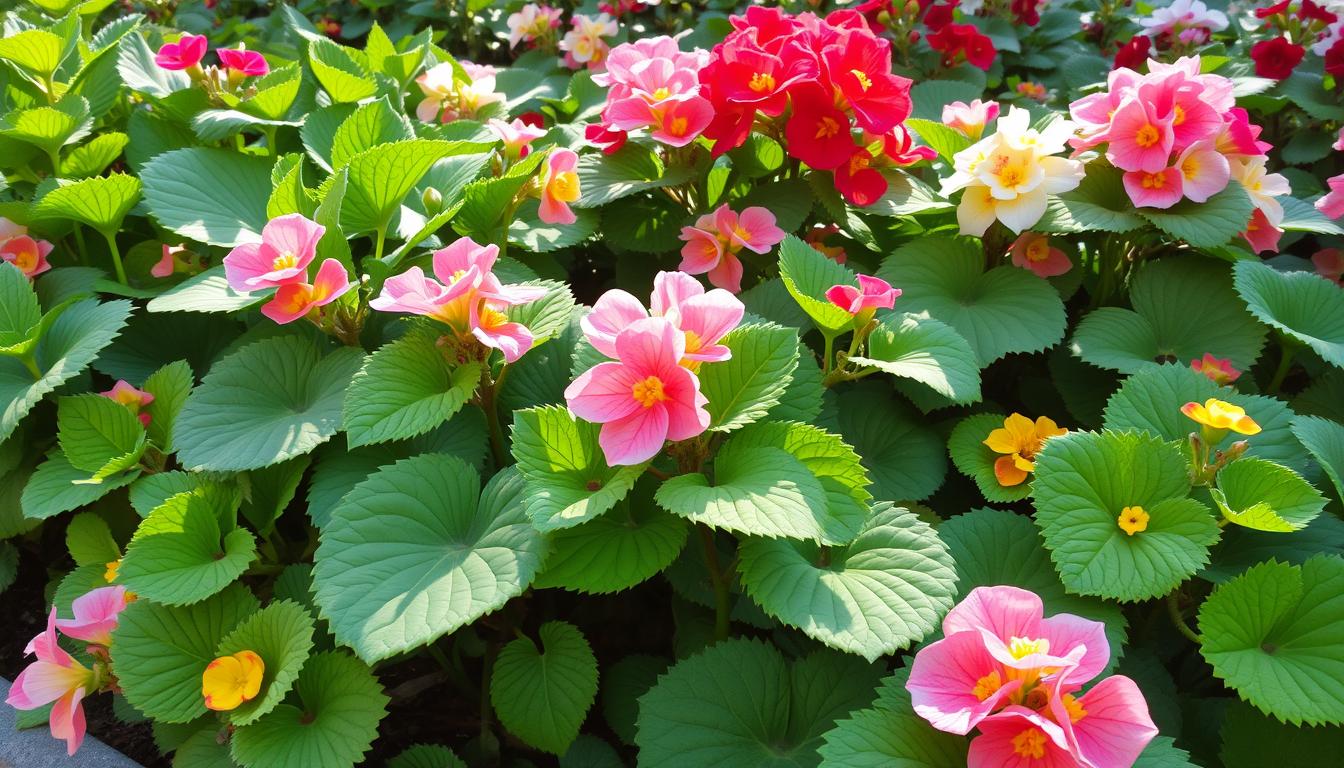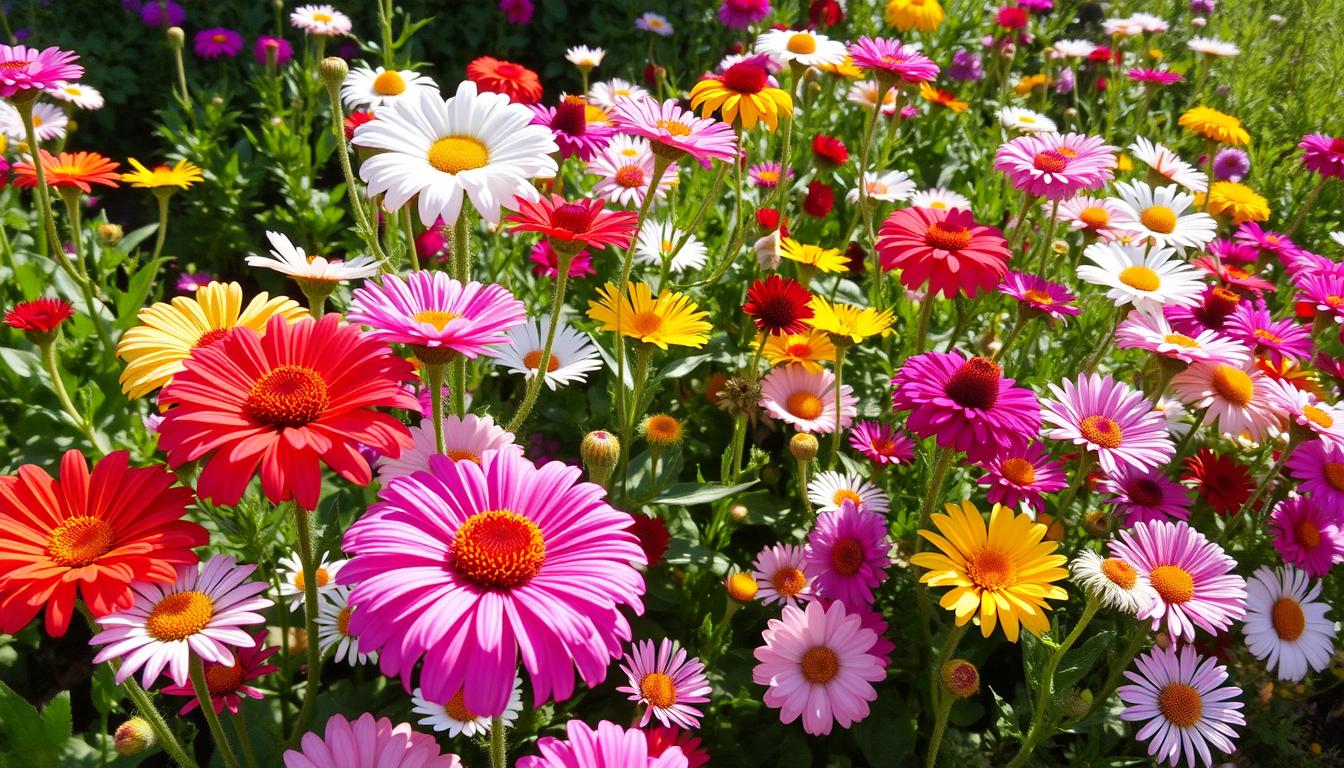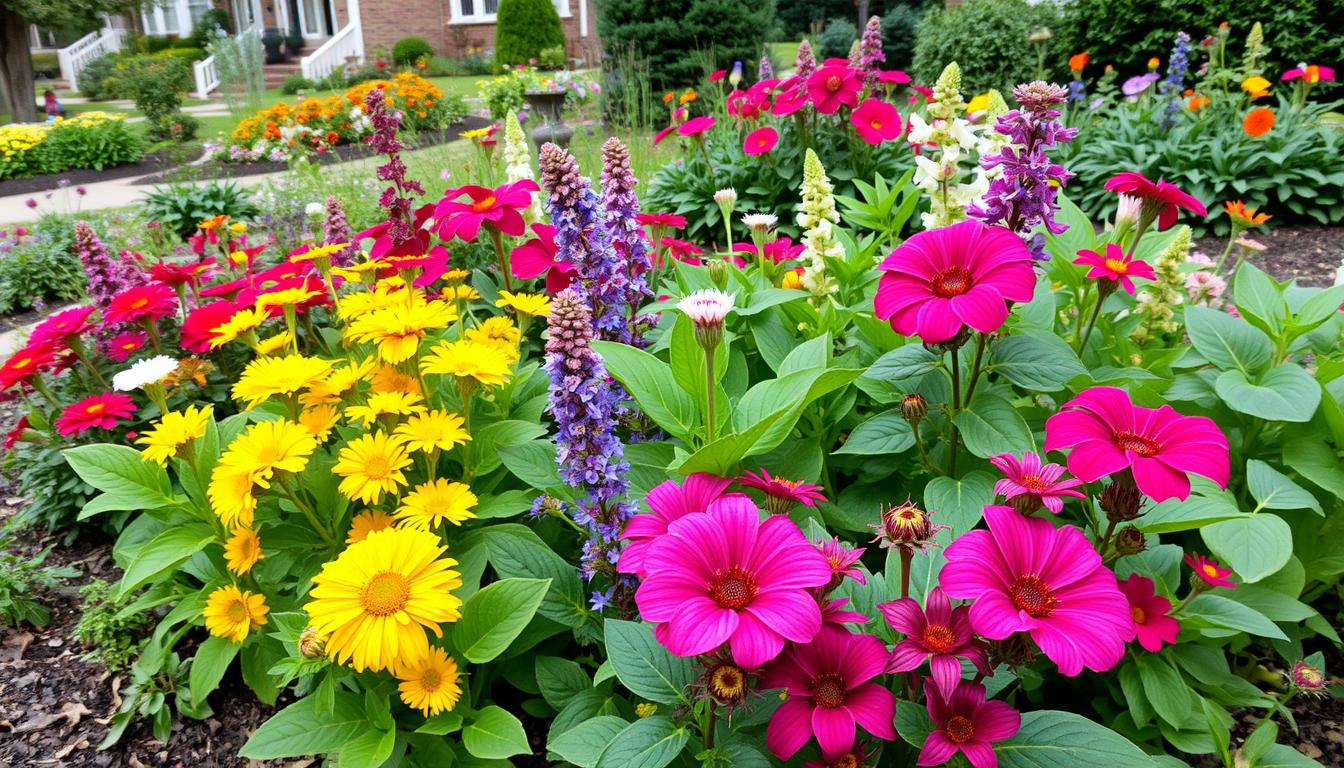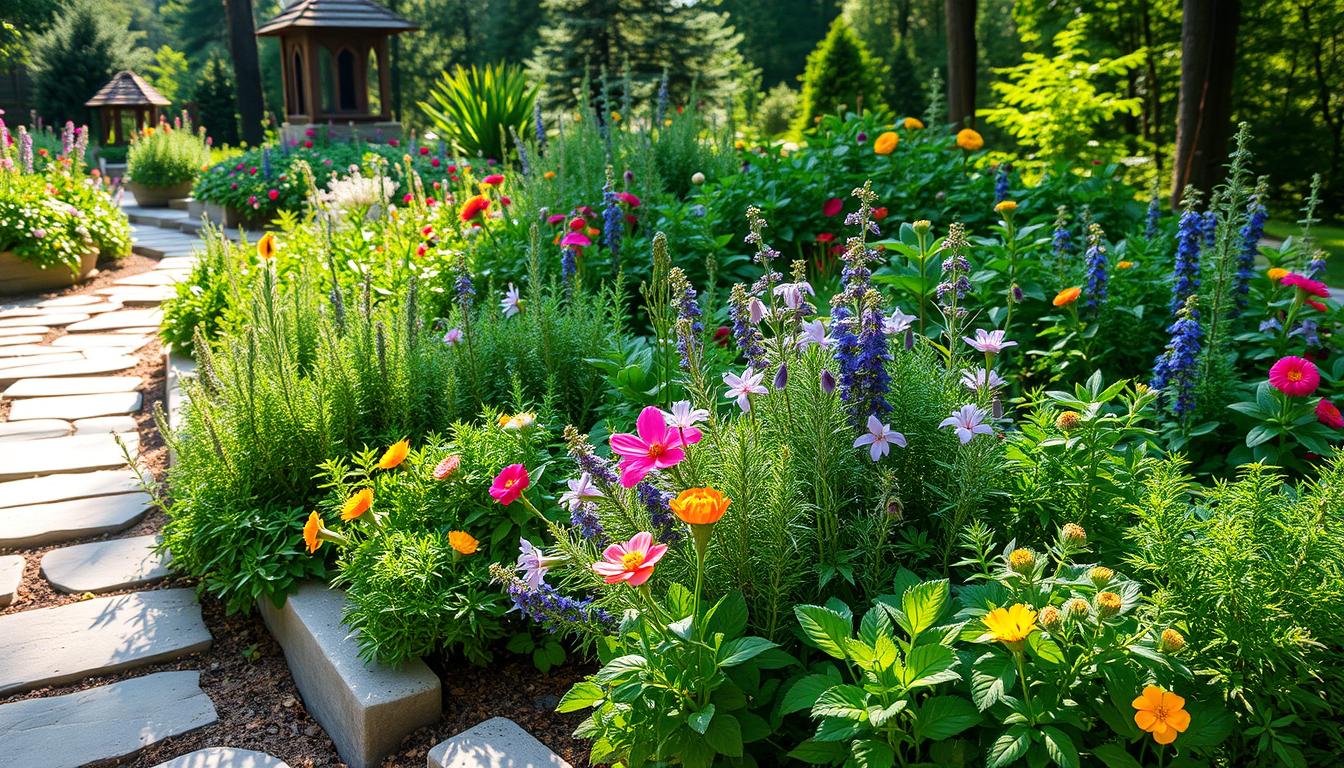Sage Substitute Herb : As fall arrives and the holidays near, the kitchen fills with the scent of herbs. Sage’s rich aroma is especially welcome, bringing warmth to our dishes. But what if you can’t find sage? Don’t worry, there are many tasty alternatives to enhance your cooking.
Starting an indoor herb garden is a great way to have fresh herbs anytime. It’s easy to set up and can be enjoyed by anyone. The joy of using your own herbs in holiday meals is unmatched.
Table of Contents
Understanding Sage’s Culinary Role
Sage has been loved for over 2,000 years, starting in the Mediterranean. The ancient Greeks and Romans used it for healing. Today, chefs and home cooks love it for its unique taste and many uses.
Flavor Profile and Characteristics
Sage tastes earthy, slightly peppery, and aromatic because it’s in the mint family. When cooked, its flavor gets even stronger. It goes great with rich meats, savory sauces, and roasted veggies.
Common Uses in Cooking
Sage is used in many dishes worldwide, from saltimbocca in Italy to fattoush salad in the Middle East. In America, it’s a key part of Thanksgiving stuffing and seasoned poultry. In the Mediterranean, it’s in stews, soups, and roasted meats, adding to garlic, olive oil, and citrus.
Health Benefits
Sage is not just tasty; it’s also good for you. It fights off germs and inflammation, helping with sore throats, coughs, and digestion. Its antioxidants make it great for a healthy diet.
Whether making an Italian dish or trying new recipes, knowing about sage is key. Discover sage flavor substitutes, sage seasoning alternatives, and sage like herbs to make your dishes better.
Top Herb Substitutes for Sage
Sage is a key herb in many dishes, but sometimes you might need something else. Maybe you want to try new tastes or just don’t have sage. Luckily, there are many herbs that can replace sage and add interesting flavors to your meals.
Thyme
Thyme is a great choice if you’re looking for a sage substitute. It has a rich, slightly minty taste that goes well with many dishes. Use thyme in the same amount as the sage the recipe calls for.
Marjoram
Marjoram is another good option. It has a sweet, mild flavor that works well in sage recipes. But because marjoram is softer than sage, start with a little and adjust to taste.
Rosemary
Rosemary is strong and pine-like, making it a good substitute for sage in some dishes. Use less rosemary than sage because its flavor is stronger. Add more until you get the taste you like.
Trying these herbs to use instead of sage can really spice up your cooking. The trick is to adjust the amounts to fit your taste and the recipe’s needs. Also, using sage-free seasoning blends can help you discover new flavors.
Spice Alternatives to Sage
Need a flavorful substitute for sage? Look in your spice cabinet. These herbs and mixes can add earthy, savory notes to your dishes.
Poultry Seasoning
Poultry seasoning is great for substituting sage. It has herbs like rosemary, thyme, and marjoram. Use it 1:1 with dried sage for a similar taste.
Italian Seasoning
Italian seasoning is another good choice. It has basil, oregano, sage, thyme, rosemary, and marjoram. Substitute it 1:1 with dried sage for a tasty mix.
Herbs de Provence
Herbs de Provence comes from France. It has sage, thyme, rosemary, and lavender. Use it 1:1 with sage for chicken or roasted vegetables.
| Spice Blend | Sage Substitution Ratio | Best Uses |
|---|---|---|
| Poultry Seasoning | 1:1 | Roasted meats, stuffings, gravies |
| Italian Seasoning | 1:1 | Pasta dishes, pizza, tomato-based sauces |
| Herbs de Provence | 1:1 | Chicken, roasted vegetables, Mediterranean dishes |
When using these mixes, start with small amounts. Their flavors are strong. Adjust to taste and find the right balance for your dish.
Fresh Herb Substitutes for Sage
Sage is a key herb in many dishes, but it can be hard to find or grow. Luckily, there are fresh herbs that can replace sage and add similar flavors. These substitutes can bring earthiness, a hint of licorice, or a peppery taste to your meals.
Basil
Basil’s sweet and slightly peppery taste makes it a great sage substitute. It works well in pasta, salads, and pestos, adding a mild flavor. Use basil in the same amount as sage.
Oregano
Oregano has a bitter and peppery taste, making it a good sage replacement. It’s perfect for savory dishes like stuffings, roasted meats, and sauces. Use the same amount of oregano as sage.
Tarragon
Tarragon’s mild, licorice-like taste adds complexity to dishes like sauces, dressings, and chicken. Start with equal parts tarragon and sage, then adjust to taste.
When using these substitutes, remember the flavor might be different. Adjust the amounts to match your taste and the dish. Try these herbs to find the perfect mix for your cooking.
How to Use Sage Substitutes Effectively
Sage Substitute Herb;Finding the right sage substitute can change your cooking game. Whether you’re out of fresh sage or want to try new flavors, knowing how to use substitutes is key. Let’s dive into some techniques and tips to boost your cooking.
Adjusting Quantities
Sage Substitute Herb ,When substituting sage, the flavor intensity of the substitute is crucial. Start with small amounts and add more until it tastes right. For example, dried sage is stronger than fresh, so use less of it. Taste as you go to get the perfect flavor.
Considering Dish Types
The dish you’re making affects which substitute works best. Thyme and rosemary are great in roasted veggies, soups, and stews. Marjoram or poultry seasoning are better in meat dishes. Choose substitutes that match your dish’s flavor profile for the best taste.
Balancing Flavors
Herb substitution tips often suggest mixing different herbs for depth. A mix of thyme, rosemary, and oregano can mimic sage’s earthy taste. Try different combinations to find the flavor you like best.
Learning to use sage substitutes well is a skill for any cook. By adjusting amounts, considering dish types, and balancing flavors, you can take your cooking to new levels.
Sage Substitutes in Different Cuisines
International cooking offers many ways to replace sage with herbs and spices. You can make Mediterranean classics, American dishes, or Asian recipes with ease. There are many international sage alternatives and global herb substitutes to try.
Mediterranean Cooking
In Mediterranean cooking, oregano and thyme are great substitutes for sage. Use oregano in the same amount, but adjust thyme a bit because it’s stronger. These herbs are perfect for Italian lasagna, Greek roasted vegetables, and Moroccan tagines.
American Dishes
For American recipes, like Thanksgiving stuffing, marjoram or poultry seasoning are good choices. Marjoram has a similar taste but is milder. Use a bit more of it. Poultry seasoning, with sage, thyme, and other herbs, also works well.
Asian-Inspired Recipes
For Asian dishes, try fresh basil or a little five-spice powder instead of sage. Basil adds a unique flavor, while five-spice powder brings a complex aroma. This can really enhance your dish.
Remember, the secret to substituting sage is to adjust the amounts and try different global herb substitutes. This way, you can find the perfect flavor for your dishes.
Making Your Own Sage-Free Herb Blends
Are you tired of dishes being too strong from sage? Discover a new world of flavors by making your own herb blends without sage. With just a few ingredients, you can make delicious seasonings that suit many tastes.
Basic Herb Blend Recipe
Begin by mixing dried thyme, rosemary, marjoram, and a bit of black pepper. This mix is great for many dishes. Add oregano for an Italian flavor or tarragon for French tastes.
Customizing for Different Dishes
- For Mediterranean meals, use basil, oregano, and rosemary.
- For American classics, try thyme, marjoram, and garlic powder.
- Asian dishes might need ginger, white pepper, and sesame seeds.
Storage and Shelf Life
Store your herb blends in airtight containers, away from light and heat, to keep them fresh and flavorful for longer. Proper storage ensures your homemade herb blends can last for months, allowing you to enjoy their vibrant taste and aroma over time.
Sage Substitutes in Baking
When baking with sage, great alternatives can add depth to your recipes. Aromatic rosemary and lavender are perfect for cookies and shortbread.
Thyme and oregano bring earthy notes to herb breads and biscuits, making them excellent Sage Substitute Herbs.
Sweet Recipes
In sweet recipes, like sage-infused shortbread, try rosemary or lavender. They add a floral or pine-like flavor that’s perfect with sweetness. Pair your baked goods with lemon zest, toasted nuts, or honey for extra flavor.
Savory Baked Goods
“For savory baked goods, thyme or oregano make great Sage Substitute Herbs. They add a warm, earthy taste that complements savory dough.
Try adding grated cheese or caramelized onions to enhance the flavor balance.
Flavor Pairings
When using sage substitutes, think about flavors that go well together. Lemon zest brightens the herbaceous notes. Toasted nuts or Parmesan cheese add richness. Experiment to find the best match for your baked goods.
By using these sage alternatives, you can make your baked goods unique and tasty. Baking with sage alternatives and herb substitutes for baked goods is easy and fun.
“Experimentation with different combinations of sage substitutes is encouraged to create depth and complexity in dishes.”
Growing Sage Substitutes at Home
Growing your own herbs at home is a great way to have fresh sage substitutes anytime. Herbs like thyme, rosemary, and oregano are easy to grow indoors and outdoors.
Indoor Herb Gardens
For indoor gardens, find a sunny spot that gets 6-8 hours of direct sunlight. Basil loves warm temperatures and lots of sunlight. Mint prefers temperatures between 65-75°F and can handle partial shade. Chives can grow in both full sun and partial shade.
Outdoor Cultivation
Outdoor gardens need the right climate and soil for each plant. Rosemary needs full sun and can’t handle frost. Thyme likes well-drained soil and can survive with little water. Choosing the right spot and preparing the soil well is key.
Care and Maintenance
Pruning and watering regularly keep herb plants healthy and vibrant. Knowing how to care for each herb, like soil moisture and pruning, is important. Harvesting leaves or stems often encourages more growth.
Home herb gardening gives you fresh sage substitutes and lets you try new flavors. With a bit of care, you can enjoy homegrown herbs all year.
Nutritional Comparisons of Sage and Its Substitutes
Sage is known for its antioxidants, but many Sage Substitute Herbs offer similar health benefits. Knowing the nutritional profiles of different herbs helps you pick the best substitutes for sage, enhancing both flavor and health in your cooking.
Vitamin and Mineral Content
Sage is rich in vitamin K, but Sage Substitute Herbs like thyme and basil also contain plenty of this vitamin.
Thyme is packed with vitamin C and A, which help boost your immune system.
Basil offers similar benefits, supporting overall health with its nutrients.
Rosemary, another great alternative, is full of manganese, which aids in bone health and metabolism.
These herbs provide excellent nutritional value, making them perfect substitutes for sage in your dishes
Antioxidant Properties
While sage is famous for antioxidants, rosemary and oregano are also strong. Rosemary has lots of antioxidants, protecting cells from damage. Oregano has compounds that might fight inflammation and infections.
Potential Health Benefits
- Basil: Rich in vitamin K, which is important for blood clotting and bone health.
- Thyme: High in antioxidants and may have antimicrobial properties.
- Rosemary: Contains compounds that may help improve cognitive function and reduce the risk of certain cancers.
- Marjoram: Has been used in traditional medicine to alleviate digestive issues and respiratory problems.
When picking a sage substitute, think about your dish’s nutritional needs and health benefits. This way, you can make tasty and healthy meals that are good for you.
Experimenting with Sage Substitutes in Classic Recipes
When you’re making classic recipes with sage, feel free to try new things. For stuffing, mix thyme and marjoram to get a flavor close to sage. For a sage and onion sauce, use rosemary and thyme to bring out the herb taste.
In dishes like Saltimbocca, which often has fresh sage, you can use a bit of oregano or basil. Just remember to taste and adjust as you go. This way, you can make sure the flavors work well together.
Trying out different herbs can make old recipes feel new again. It’s a great way to keep the flavors you love while adding a twist. So, go ahead and experiment to find the perfect mix of herbs for your taste.

